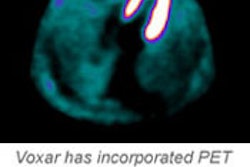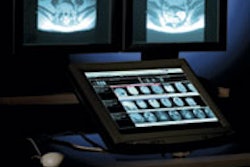CHICAGO - Preparing imaging modalities to operate in a PACS environment can consume significant human and financial resources. And that task is complicated by the use of imaging systems of varying age and DICOM conformance, according to researchers from the University of Montreal Hospital (CHUM).
“DICOM conformance makes image exchange possible, but does not guarantee that utilization of the image will be optimally accomplished,” said Alain Gauvin. “A conformance statement does not fully describe interoperability.” Gauvin spoke during a scientific session Wednesday at the 2003 RSNA meeting in Chicago.
CHUM deployed a large-scale PACS network between February 2002 and December 2002. The project involved 95 imaging entities (including five MR, nine CT, and one PET scanner).
After installation, more than 90% of the initial film production had been eliminated, producing an ideal situation to evaluate equipment interoperability, Gauvin said. The researchers evaluated the necessary preparation required for each modality, and recorded and categorized subsequent interoperability problems.
Creating an interoperability index, the study team graded the severity of any problem on a scale of 1 (slight inconvenience), 2 (substantial interoperability impact), to 3 (interface unusable), taking into account the efficiency of the palliative action.
Essentially half (49%) of all modalities required some form of enhancement in preparation for a PACS deployment, he said.
These enhancements ranged from light (unlocking pre-installed software) to extensive (a digital acquisition hardware upgrade and software upgrade). Interfaces were tested in extensive trials prior to being placed in production.
CHUM acquired worklist capability on all modalities, when available, Gauvin said.
“A minimum amount of unverified studies was judged to be an important criterion,” he said.
One proprietary, non-DICOM worklist was commissioned and functions adequately, Gauvin said.
For DICOM analysis, the researchers deployed a TCP/IP sniffer in combination with a DICOM protocol analyzer. Of the modalities, 41% had a level 1 interoperability problem, while 22% of modalities had a level 2 issue. Only one modality (1%) had a level 3 problem, which was due to an inability to shift images in angiography.
When a native DICOM interface could not be acquired (14% of cases), video signal capture (frame grabbing) was used to achieve integration, he said. Only 10% of exam rooms could be not be brought into DICOM modality worklist compliance.
“Interoperability with external system should be an important criterion in the selection of imaging modalities,” Gauvin said.
By Erik L. Ridley
AuntMinnie.com staff writer
Related
DICOM
Conformance, November 4, 2002
Technology
Update: Are PACS networks plug-and-play yet?, March
21, 2001
Copyright © 2003 AuntMinnie.com




















